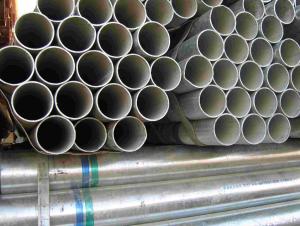When it comes to construction, one of the most fundamental elements is rebar, or reinforcing bar. It’s the skeleton of the structure, providing strength and stability. But have you ever wondered about the weight of rebar? How much does a foot of rebar weigh? This is a question that many contractors, engineers, and even DIY enthusiasts often ask. Let’s dive into the world of rebar and understand the weight per foot, its importance, and how it contributes to the overall strength of a structure.
The Heft of Rebar: A Basic Overview
Rebar, made from steel, comes in various diameters and grades. The weight of a foot of rebar is determined by its diameter and the material’s density. Steel has a density of approximately 0.284 pounds per cubic inch (or 7850 kg/m³). To calculate the weight of a foot of rebar, you can use the following formula:
Weight per foot = (π/4) (diameter/2)² density length
This formula takes into account the volume of the rebar and multiplies it by the density of steel to find the weight. It’s a simple yet powerful tool for anyone working with rebar.
Why Does Rebar Weight Matter?
The weight of rebar is not just a number on a scale; it has real-world implications. It affects the transportation, handling, and overall cost of a construction project. Heavier rebar requires more effort to move and install, which can translate to higher labor costs. Moreover, the weight of rebar is directly related to its strength. Thicker rebar can support more weight, making it ideal for larger structures or areas with higher stress requirements.
Factors Influencing Rebar Weight
Several factors can influence the weight of a foot of rebar, including:
– Diameter: The larger the diameter, the heavier the rebar. It’s a straightforward relationship.
– Grade of Steel: Different grades of steel have slight variations in density, which can affect the weight.
– Coating: Some rebar is coated with materials like epoxy or zinc to protect against corrosion. These coatings add to the weight.
– Length: While the formula calculates weight per foot, the total length of the rebar used in a project will also affect the total weight.
Common Rebar Diameters and Their Weights
To give you a clearer picture, let’s look at some common rebar diameters and their approximate weights per foot:
– 3 Rebar (3/8&8243; or 9.5mm): 0.91 pounds per foot (0.41 kg/m)
– 4 Rebar (1/2&8243; or 12.7mm): 1.58 pounds per foot (0.72 kg/m)
– 5 Rebar (5/8&8243; or 15.9mm): 2.47 pounds per foot (1.13 kg/m)
– 6 Rebar (3/4&8243; or 19mm): 3.29 pounds per foot (1.52 kg/m)
– 7 Rebar (1&8243; or 25.4mm): 4.45 pounds per foot (2.04 kg/m)
These weights are approximate and can vary slightly depending on the specific grade of steel and any coatings applied.
Rebar Weight in Action: Real-World Applications
Understanding the weight of rebar is crucial for various applications in construction and engineering. It helps in:
– Structural Design: Engineers use the weight and strength of rebar to design structures that can withstand various loads and forces.
– Material Estimation: Contractors need to know the weight to estimate the amount of rebar needed for a project and to order the correct quantities.
– Cost Calculation: The weight of rebar is a factor in calculating the cost of materials for a construction project.
– Safety: Proper handling of rebar, considering its weight, is essential for the safety of workers on site.
The Future of Rebar: Innovations and Advancements
The world of rebar is not static. Innovations in material science and construction techniques are leading to advancements in rebar technology. We’re seeing the development of:
– High-Strength Rebar: With higher yield strength, these rebars can support more weight with less material.
– Lightweight Rebar: Made from alternative materials, these rebars are lighter and easier to handle but still provide adequate strength.
– Smart Rebar: Integrated with sensors, these rebars can monitor the health of a structure and alert engineers to potential issues.
Wrapping Up: The Significance of Rebar Weight
In conclusion, the weight of rebar per foot is a critical aspect of construction projects. It’s not just about the numbers; it’s about understanding the implications of those numbers on the safety, cost, and efficiency of a project. Whether you’re a seasoned engineer or a DIY enthusiast, knowing the weight of rebar can make a world of difference in your work. So, the next time you pick up a piece of rebar, remember the heft in your hands is not just steel—it’s the strength and stability of the structure you’re building.

